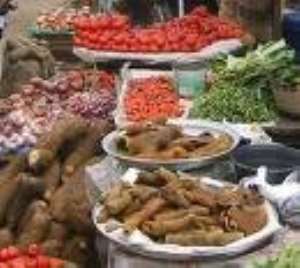
Food is the basic necessity for all living organisms. It is an important and fundamental need of every human beings. The world produce enough food to feed everyone yet 800 million people in the world-200 million of them, children under five years-do not have enough to eat while one in every nine people on earth goes to bed hungry each night.
According to the Food and Agricultural Organization (FAO), 1.3 billion tons of food is lost or wasted globally per year. This means that one –third of food produced in the world for human consumption is not eaten. These uneaten food when put on a land area will occupy almost 1.4 billion hectares of land, this represents close to 30% of the world agricultural land area.
The FAO estimate that food worth about $940 billion is lost or wasted each year throughout the entire food supply chain.Food lost and waste have many negative economic and environmental impacts. Economically, they represent a wasted investment that can reduce farmers’ incomes and increase consumers’ expenses.
Environmentally, they inflict a host of impacts, including unnecessary greenhouse gas emission and inefficiently used water and land, which in turn can lead to diminished natural ecosystem and the services they provide. Food is lost or wasted throughout the various stage of the food supply chain.
Food loss refer to food lost at the production, post –harvest and processing stages in the food supply chain while food waste refer to food discarded at the end of the supply chain by retailers and consumers. Food wastage refer to the combination of both food loss and food waste.
During agricultural production,crops that are harvested can be damaged or spilled,animals may die due to diseases.Crops and animals may be lost during post-harvest handling,storage and in transportation.For instance, a harvested maize that fall off a truck is considered as food loss. During processing, food may be lost or degraded during washing, peeling, slicing, canning, and packaging. During distribution, food may be lost or wasted at wholesale markets, supermarkets, etc. Finally, consumers may waste food by throwing it away.
It is estimated that 54% of food wastage occurs at the “upstream” that is during production, post-harvest handling and storage while 56% of the food wastage occurs at the “downstream” that is during processing, distribution and consumption stages.
In developing countries such as Ghana, the issue of post-harvest loss and waste is not uncommon.Recently,army worms has invaded many maize farms in the country and destroy them, this account for food loss.
These high levels of food loss in developing countries is unintentional due to the financial and structural limitation in harvesting techniques, storage and transport infrastructure combined with climatic conditionsfavorable for food spoilage. These perennial problems massively affect our food and the agricultural economy.
The world’s population is expected to grow by 2050 to 9 billion people, there is no gain-saying that demand for food will increase. With such an anticipated population growth, reducing food loss and waste could be one of the leading global strategies for achieving a sustainable food future.
EMAIL: [email protected]




 Meta releases new version of conversational AI across its platforms
Meta releases new version of conversational AI across its platforms
 Cape Town named Africa’s Best Airport 2024 by Skytrax
Cape Town named Africa’s Best Airport 2024 by Skytrax
 Bono East: Four injured after hearse transporting corpse crashes into a truck
Bono East: Four injured after hearse transporting corpse crashes into a truck
 ‘Be courageous, find your voice to defend our democracy’ — Sam Jonah urges journ...
‘Be courageous, find your voice to defend our democracy’ — Sam Jonah urges journ...
 Exodus of doctors, nurses and teachers have worsened because of unserious Akufo-...
Exodus of doctors, nurses and teachers have worsened because of unserious Akufo-...
 2024 election: Avoid insults, cutting down people in search of power – National ...
2024 election: Avoid insults, cutting down people in search of power – National ...
 ‘You passed through the back door but congratulations’ — Atubiga on Prof Jane Na...
‘You passed through the back door but congratulations’ — Atubiga on Prof Jane Na...
 Government’s $21.1 billion added to the stock of public debt has been spent judi...
Government’s $21.1 billion added to the stock of public debt has been spent judi...
 Akufo-Addo will soon relocate Mahama’s Ridge Hospital to Kumasi for recommission...
Akufo-Addo will soon relocate Mahama’s Ridge Hospital to Kumasi for recommission...
 We must not compromise on our defence of national interest; this is the time to ...
We must not compromise on our defence of national interest; this is the time to ...
